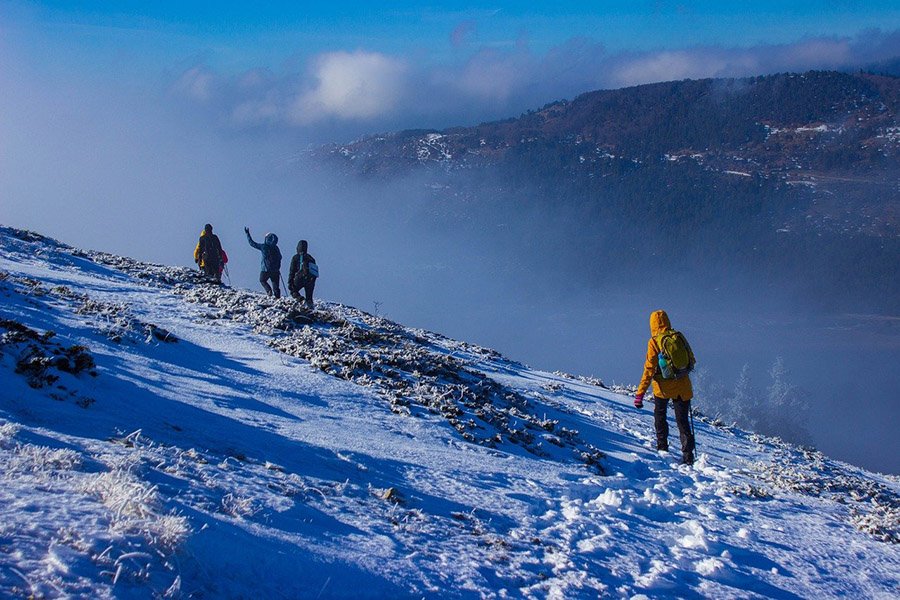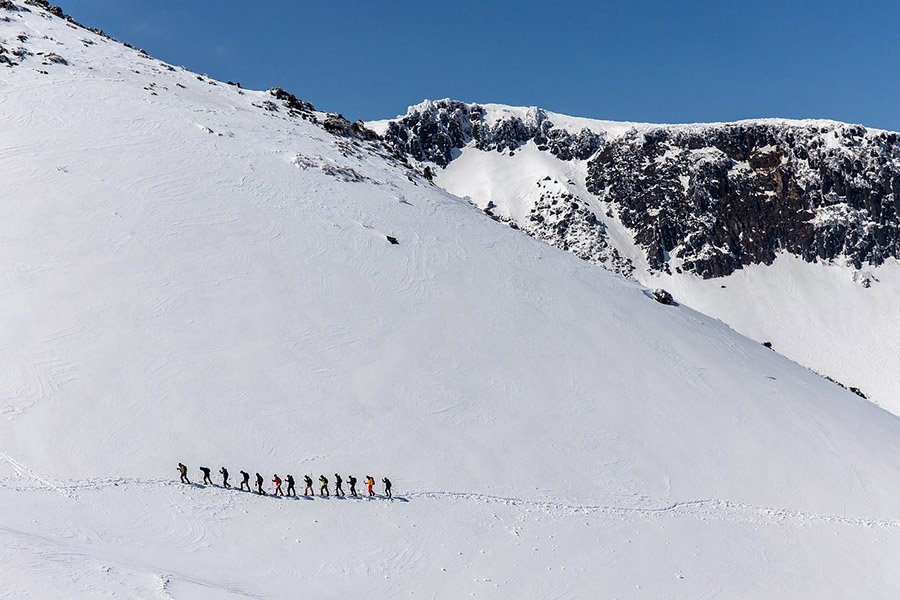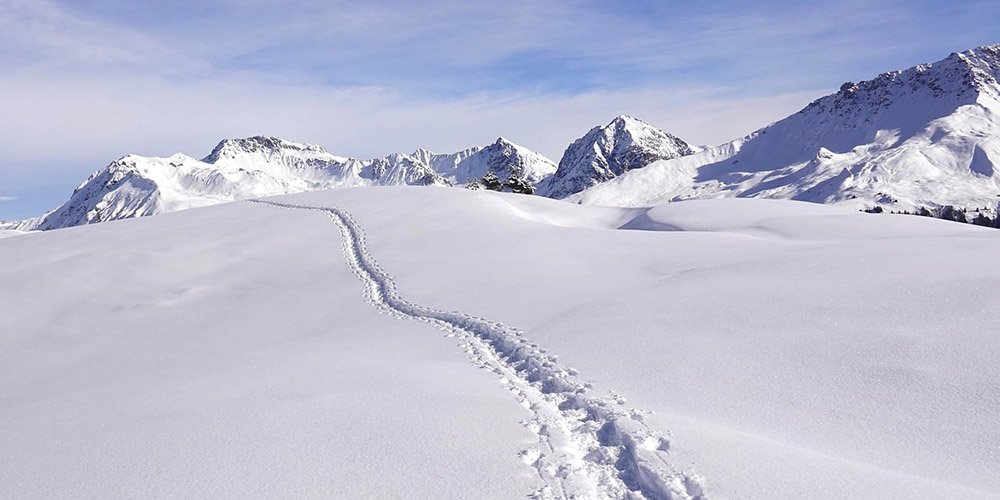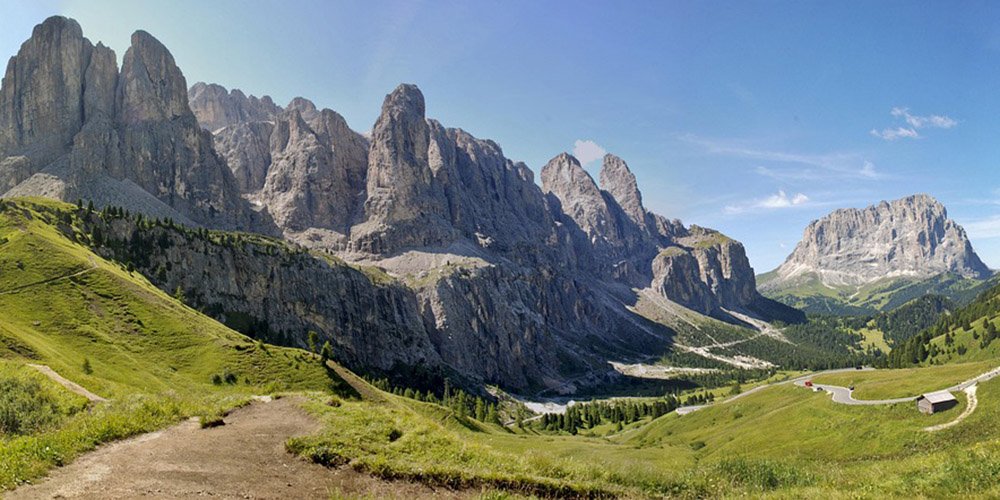Must-Have Winter Hiking Gear for a Great and Safe Experience
Winter hiking offers a unique and exhilarating experience, transforming familiar trails into stunning snow-covered landscapes. The crisp, cold air, the serenity of a snow-blanketed forest, and the beauty of icy vistas are just a few of the joys that come with winter hiking.
However, these adventures also bring specific challenges, such as colder temperatures, shorter daylight hours, and potentially hazardous conditions like ice and snow. Proper gear is essential for safety and comfort, ensuring you can fully enjoy your hike without worrying about the elements.
Having the right winter hiking gear is crucial. It helps you stay warm, dry, and safe while navigating winter terrains. From moisture-wicking base layers to insulated outer layers and specialized equipment like crampons, each piece of gear plays a vital role in your overall hiking experience. This guide will walk you through the essential winter hiking gear you need to conquer the cold and make the most of your winter adventures.
Layering Clothing for Winter Hiking
Base Layer
The base layer is your first line of defense against the cold. Its primary function is to wick moisture away from your skin, keeping you dry and preventing chill. When it comes to base layers, materials like merino wool and synthetic fabrics are ideal. These materials excel at moisture management, helping to regulate your body temperature during strenuous activity.
- Importance of Moisture-Wicking Materials: Moisture-wicking fabrics pull sweat away from your skin, keeping you dry and comfortable. This is crucial in cold weather, as wet clothing can lead to rapid heat loss and increase the risk of hypothermia.
- Recommended Products:
- Smartwool 250 Base Layer: Known for its excellent warmth-to-weight ratio, this merino wool layer provides comfort and insulation without bulk.
- REI Midweight Base Layer: A more affordable synthetic option, this base layer offers good moisture management and comfort for cold-weather activities.
Mid Layer
The mid layer’s role is to provide insulation, trapping body heat to keep you warm. Depending on the conditions, you might choose between fleece jackets, synthetic insulated jackets, or down jackets. The key is to find a balance between warmth and breathability.
- Role of Insulation and Warmth: The mid layer should provide sufficient insulation to retain your body heat while allowing moisture to escape. This helps maintain a comfortable body temperature during activity.
- Popular Choices:
- Fleece Jackets: Lightweight and breathable, fleece jackets like the Patagonia R1 are versatile options for various conditions.
- Insulated Pants: For extremely cold conditions, insulated pants such as the REI Co-op Activator Soft-Shell Pants provide added warmth and protection.
Outer Layer
The outer layer, or shell, is designed to protect you from wind, rain, and snow. It should be waterproof, windproof, and breathable to keep the elements out while allowing moisture from sweat to escape. A good outer layer is essential for maintaining warmth and comfort in harsh winter conditions.
- Need for Windproof and Waterproof Protection: An effective outer layer shields you from the elements, preventing wind and moisture from penetrating your clothing. This helps maintain your body’s insulation and prevents heat loss.
- Examples of Suitable Jackets and Pants:
- Arc’teryx Beta AR Jacket: A high-performance shell that offers excellent weather protection and breathability, ideal for winter hiking.
- Columbia Bugaboo IV Pants: These pants provide a durable water-repellent (DWR) finish and insulation, perfect for cold and wet conditions.
By carefully selecting and layering your winter hiking clothing, you can effectively manage your body temperature and stay comfortable on the trail. Proper layering is the foundation of a safe and enjoyable winter hiking experience.
Also read: Best Hiking Hairstyles – For Comfort, Convenience, and Style

Essential Winter Hiking Gear
Footwear
Proper footwear is crucial for winter hiking. The right boots will keep your feet warm, dry, and comfortable, allowing you to focus on the trail ahead. Waterproof and insulated boots are essential to prevent your feet from getting wet and cold, which can lead to frostbite and other cold-related injuries.
- Importance of Waterproof and Insulated Boots: Waterproof boots prevent moisture from snow and slush from soaking through, while insulation keeps your feet warm in freezing temperatures. Good traction is also essential to prevent slips on icy surfaces.
- Top Picks:
- Merrell Thermo Chill Mid Waterproof Boots: These boots feature a waterproof membrane, low-volume insulation, and deep rubber tread, making them excellent for winter hiking.
- Oboz Bridger Insulated Boots: Known for their durability and comfort, these boots offer waterproof protection and Thinsulate insulation to keep your feet warm in harsh winter conditions.
Head and Hands
Keeping your head and hands warm is vital, as these areas are particularly vulnerable to cold weather. Proper headgear and gloves will help maintain your body heat and protect against frostbite.
- Hats, Gloves, and Mittens for Warmth: Look for items made from materials like fleece, wool, and synthetic fibers, which provide excellent insulation and moisture-wicking properties.
- Recommendations for Thermal and Waterproof Options:
- Hats: A fleece or wool hat that covers your ears is essential. The Smartwool Merino 250 Beanie is a great choice for its warmth and moisture-wicking properties.
- Gloves: Thermal gloves with waterproof and windproof features are ideal. Outdoor Research Alti Mitts provide exceptional warmth and protection in extreme conditions.
- Mittens: For extra warmth, consider mittens like the Black Diamond Mercury Mitts, which offer a combination of fleece insulation and a waterproof outer layer.
Hydration and Nutrition
Staying hydrated and well-nourished is crucial during winter hikes, even though you might not feel as thirsty in cold weather. Proper hydration helps maintain your energy levels and overall health.
- Tips for Preventing Water from Freezing: In freezing temperatures, it’s common for water bottles and hydration systems to freeze. To prevent this:
- Use Insulated Bottles: Vacuum-insulated bottles like the Hydro Flask keep your water from freezing and maintain a drinkable temperature for longer periods.
- Insulated Sleeves and Covers: Use insulated sleeves for your water bottles or hydration packs to protect them from the cold.
- Warm Drinks: Carry a vacuum-insulated bottle filled with a warm beverage, such as hot tea or cocoa, to enjoy a warm drink during breaks.
By equipping yourself with the right winter hiking gear, you can stay warm, safe, and comfortable on your cold-weather adventures. Proper footwear, head and hand protection, and effective hydration strategies are key components of a successful winter hike.
Also read: 100 Hiking Jokes For A Good Laugh On The Trail

When hiking in winter, reliable navigation tools are essential. Snow can obscure trails and landmarks, making it easy to lose your way. A compass and GPS are crucial for safe navigation in these conditions.
- Importance of a Compass and GPS: A compass provides a reliable backup when GPS signals are weak or unavailable, ensuring you can always find your bearings. A GPS device offers precise location tracking and route mapping, which is invaluable in unfamiliar or challenging terrain.
- Recommended Models and Usage Tips:
- Compass: The Suunto MC-2 is a high-quality compass with a sighting mirror and global needle, ideal for precise navigation.
- GPS: The Garmin eTrex 32x is a compact and reliable GPS unit with preloaded maps and a long battery life, perfect for winter hikes.
- Usage Tips: Always carry a physical map and know how to use your compass. Regularly check your position on the GPS and mark waypoints to track your route.
Lighting
Winter hikes often involve limited daylight hours, making reliable lighting essential. Headlamps and lanterns are crucial for visibility and safety in low-light conditions.
- Need for Headlamps and Lanterns: A good headlamp frees your hands for hiking and navigating, while lanterns provide broader illumination for campsite activities.
- Best Products for Visibility in Low-Light Conditions:
- Headlamps: The Black Diamond Spot 350 offers powerful illumination, multiple lighting modes, and water resistance, making it a versatile choice for winter hikes.
- Lanterns: The LE LED Camping Lantern is a lightweight, waterproof option that provides ample light for camp settings and emergency situations.
Emergency Gear
Carrying essential emergency gear can make a significant difference in the event of an accident or unexpected conditions. These items are crucial for safety and preparedness.
- Essential Items:
- First Aid Kit: A comprehensive first aid kit should include bandages, antiseptics, pain relievers, and items specific to treating cold-related injuries like frostbite and hypothermia.
- Fire Starters: Waterproof matches, a lighter, and fire-starting materials (such as fire sticks or tinder) are essential for warmth and signaling.
- Emergency Shelters: Lightweight and compact options like the SOL Emergency Bivvy can provide crucial protection against the elements if you need to spend an unplanned night outdoors.
Specialized Winter Gear
Traction Devices
In icy conditions, traction devices are essential to prevent slips and falls. Crampons and microspikes provide the grip needed to safely navigate slippery trails.
- Use of Crampons and Microspikes: Crampons are designed for more extreme ice and steep terrain, while microspikes are ideal for moderate icy trails.
- Popular Brands and Models:
- Crampons: The Black Diamond Contact Crampons are durable and provide excellent traction for technical winter hiking.
- Microspikes: Kahtoola MICROspikes are widely recommended for their easy attachment and reliable grip on icy paths.
Snow-Specific Equipment
For deep snow conditions, specialized gear like snowshoes and trekking poles with snow baskets can greatly improve your mobility and safety.
- Gear for Deep Snow Conditions:
- Snowshoes: The MSR Evo Ascent Snowshoes offer excellent floatation and traction, making them ideal for deep snow and hilly terrain.
- Trekking Poles with Snow Baskets: Black Diamond Trail Ergo Cork Poles with snow baskets provide stability and support in snowy conditions.
Above Treeline Gear
For extreme conditions above the treeline or in avalanche-prone areas, additional specialized gear is necessary to ensure safety.
- Additional Items for Extreme Conditions:
- Avalanche Beacons: Devices like the Backcountry Access Tracker3 beacon are essential for locating and being located in the event of an avalanche.
- Ice Axes: The Petzl Summit Evo Ice Axe is a versatile tool for self-arrest and navigating steep, icy terrain.
By equipping yourself with the right safety and navigation tools, you can confidently tackle winter hikes while minimizing risks and staying prepared for any situation.
Also read: Best Hiking Dogs: Top 10 Breeds and Useful Tips

Tips for Winter Hiking
Staying Warm and Dry
One of the most important aspects of winter hiking is staying warm and dry. Proper layering and material choices are crucial to maintaining body heat and preventing hypothermia.
- Strategies for Layering and Choosing the Right Materials:
- Layering System: Start with a moisture-wicking base layer to keep sweat off your skin. Follow with an insulating mid-layer to trap heat, and finish with a waterproof and windproof outer layer to protect against the elements.
- Material Choice: Opt for materials like merino wool, fleece, and synthetic fabrics that offer insulation and moisture-wicking properties. Avoid cotton, as it retains moisture and can lead to rapid heat loss.
- Adjust Layers: Be prepared to add or remove layers based on your activity level and the weather to maintain comfort and prevent sweating.
- Importance of Staying Dry to Prevent Hypothermia:
- Staying dry is crucial in cold weather to avoid hypothermia. Wet clothing can quickly drain body heat, so it’s important to wear waterproof and breathable outer layers and to change out of wet clothes as soon as possible.
Food and Hydration
Maintaining energy levels and staying hydrated are vital for winter hiking. Cold weather can suppress the sensation of thirst, but your body still needs fluids and calories to generate heat and sustain activity.
- Tips for Maintaining Energy Levels and Hydration:
- Regular Intake: Eat and drink regularly throughout your hike. Keep snacks and water easily accessible to encourage frequent consumption.
- High-Energy Snacks: Pack snacks that are high in calories and easy to eat, such as nuts, chocolate, energy bars, and cheese. These provide quick energy and are less likely to freeze.
- Warm Drinks: Bring a vacuum-insulated bottle with hot drinks like tea or cocoa to stay warm and hydrated during breaks. This can also provide a psychological boost in cold conditions.
Safety Precautions
Proper planning and preparation are essential for a safe and enjoyable winter hike. Being aware of common hazards and knowing how to avoid them can prevent accidents and ensure a successful outing.
- Importance of Planning and Preparation:
- Research and Plan: Study your route, check weather forecasts, and inform someone of your plans. Be aware of daylight hours and plan your hike accordingly to avoid being caught out after dark.
- Gear Check: Ensure all your gear is in good condition and suitable for winter conditions. Pack extra layers, food, and emergency supplies.
- Tips for Avoiding Common Winter Hiking Hazards:
- Watch for Ice: Be cautious of icy patches on the trail. Use traction devices like crampons or microspikes to prevent slips and falls.
- Stay on Trail: Stick to marked trails to avoid getting lost, especially when snow covers the usual path markers. Use navigation aids like a compass and GPS.
- Monitor Health: Pay attention to signs of frostbite and hypothermia, such as numbness, shivering, and confusion. Take immediate action if you or your companions show symptoms.
Frequently Asked Questions
What is the best material for base layers in winter hiking?
Merino wool and synthetic fabrics are ideal for base layers due to their moisture-wicking and insulating properties.
How can I keep my water from freezing during a winter hike?
Use insulated bottles, keep your hydration system close to your body, and consider carrying warm drinks in a vacuum-insulated bottle.
What are the signs of hypothermia and how can I prevent it?
Signs include intense shivering, confusion, and drowsiness. Prevent hypothermia by staying dry, layering appropriately, and keeping hydrated and nourished.
Why are crampons and microspikes important for winter hiking?
These traction devices provide grip on icy trails, preventing slips and falls, and ensuring safer navigation in snowy and icy conditions.








